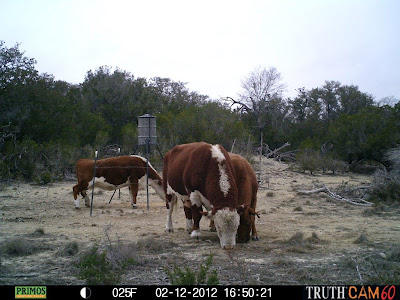I drew my pistol, cocked the hammer back and pulled the trigger. Fire and white smoke belched from the barrel and my advisory fell to the ground with a hole in its side. As it rolled to get away I fired one more shot and the coffee can was hidden from sight in a cloud of white sulfurous smelling smoke. As the smoke cleared the can lay still with holes to show where both round balls had passed through. I was firing a Replica of an 1851 Sheriff’s model cap and ball revolver. I could have been a Texas Ranger holding off a group of Comanche raiders bent on taking my hair or even a Texas Lawman facing down a desperate badman. These guns were also used in the Civil War and many Texans carried them long after. Some relied on the cap and ball revolver even after cartridge revolvers came on the scene. They were carried by such men as the James brothers and Bill Hickok.
People often ask me why I shoot the replicas of old cap and ball revolvers. They are slow to load with round ball, loose powder and percussion caps. They must be thoroughly broken down and cleaned within 24 hours of shooting or they will rust up terribly. I have to answer that they are the most fun of all the guns to shoot. It also seems that no matter how serious life or how old I get they let me step back in time for a while and relive a little history. I won’t go into all the loading and care of the old time revolvers as that information is available on the net and even videos of how to load and shoot them is available to watch on YouTube. I will tell you that today there are more replica types of black powder revolvers available to choose from than you could have found back in the time of the original Colts and Remingtons that were available to our ancestors. I am including some links to some forums I like that can put you in touch with those that shoot the revolvers on a regular basis and would love to help you get into the sport and hobby. I will warn you it is addictive. Get out and make some smoke of your own, Wild Ed
http://1858remington.com/discuss/index.php
http://blackpowdersmoke.com/forum/index.php
http://www.possibleshop.com/pistol-uberti.html
http://www.possibleshop.com/did-you-know/d-y-k-loading-the-c-b-pistol.html
http://www.voy.com/60048/
http://www.cabelas.com/catalog/browse/shooting-black-powder-pistols-revolvers/_/N-1100201/Ns-CATEGORY_SEQ_104503680?WTz_l=SBC%3BMMcat104792580%3Bcat104701680
You may wish to scroll down to the bottom of the page and mute or cut off the playlist sound before playing the video.


















































